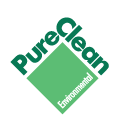International Convention for the Prevention of Pollution from Ships
What does MARPOL cover?
MARPOL includes regulations aimed at preventing and minimising, both accidental and operational, pollution from ships and currently includes six technical Annexes:
Annex I – Regulations for the Prevention of Pollution by Oil
Annex II – Regulations for the Control of Pollution by Noxious Liquid Substances in Bulk
Annex III – Prevention of Pollution by Harmful Substances Carried by Sea in Packaged Form
Annex IV – Prevention of Pollution by Sewage from Ships
Annex V – Prevention of Pollution by Garbage from Ships
Annex VI – Prevention of Air Pollution from Ships
How does Lloyd’s Register help?
Certification
We are also able to issue type approval certification for marine pollution prevention equipment and sewage treatment plants. Our involvement ranges from initial plan approval and on-board surveys to annual and renewal surveys to ensure compliance is maintained.
Technical advice
We closely monitor activities at IMO and IACS to enable us to better advise you and keep you up to date with forthcoming changes to the regulations and what they will mean to you.
Recent and upcoming new requirements
MARPOL Annex I, Regulations 40, 41 and 42 were introduced to in 2011:
The new regulations relate to STS transfers, and we have produced a plan and checklist to help operators to comply with MARPOL regulations governing the transfer of oil at sea, while meeting best-practice standards for safety and environmental protection. Ship-to-ship (STS) oil-cargo transfers at sea are a common feature of the tanker trades, and preventing spills and helping to ensure safety has long been an industry priority.
MARPOL Annex VI, Regulation 13:
Clarification on NOx certification for dual fuel and gas-fuelled engines. IMO produced Guidance on the Application of Regulation 13 of MARPOL Annex VI Tier III Requirements to Dual Fuel and Gas-fuelled Engines, published as circular MEPC.1_Circ.854. See Class News No.10/2016 for further guidance.
MARPOL Annex I, Regulation 28 – entered into force on 1 January 2016:
IMO Resolution MEPC.248(67) introduced requirements for oil tankers for stability instruments which can verify intact and damage stability requirements. See Class News No.17/2015 for further guidance.
MARPOL Annex VI Regulation 13 – entered into force on 1 January 2016:
IMO Resolution MEPC.251(66) introduced Tier III requirements for NOx control to diesel engines. See Class News No.20/2015 for further guidance.
MARPOL Annex VI – entered into force on 1 March 2016:
IMO Resolution MEPC.258(67) introduced changes to the IAPP Record of Construction format. See Class News No.09/2016 for further guidance.
MARPOL Annex I – entering into force on 1 January 2017:
IMO Resolution MEPC.266(68) introduced requirements for sludge piping to Regulation 12 of MARPOL Annex I. See Class News No.29/2016 for further guidance.
MARPOL Annex VI Regulation 13 – entering into force on 1 September 2017:
IMO Resolution MEPC.271(69) introduces requirements to record when engines change over from Tier II operation to Tier III operation on applicable ships entering Tier III ECAs.
MARPOL Annex IV Regulation 11 and 13 – entering into force on 1 September 2017:
IMO Resolution MEPC.274(69) and its corrigendum introduce changes to the format of the ISPP certificate relating to the introduction of the Baltic Sea Special Area.
MARPOL Annex IV Regulation 11 and 13 – entering into force on 1 June 2019:
IMO Resolution MEPC.275(69) postpones the introduction of the Baltic Sea Special Area requirements until 2019 for new passengers ships and 2021 for existing passenger ships. See Class News No.27/2015 for further guidance.
MARPOL Annex IV Regulation 22A – entering into force on 1 March 2018:
IMO Resolution MEPC.278(70) introduces new requirements for ships of ≥5000gt to collect and report ship fuel oil consumption data from calendar year 2019. See Class News No. 34/2016 for further guidance.
To find out more about our environmental solutions, call us today: 0117 316 7818


